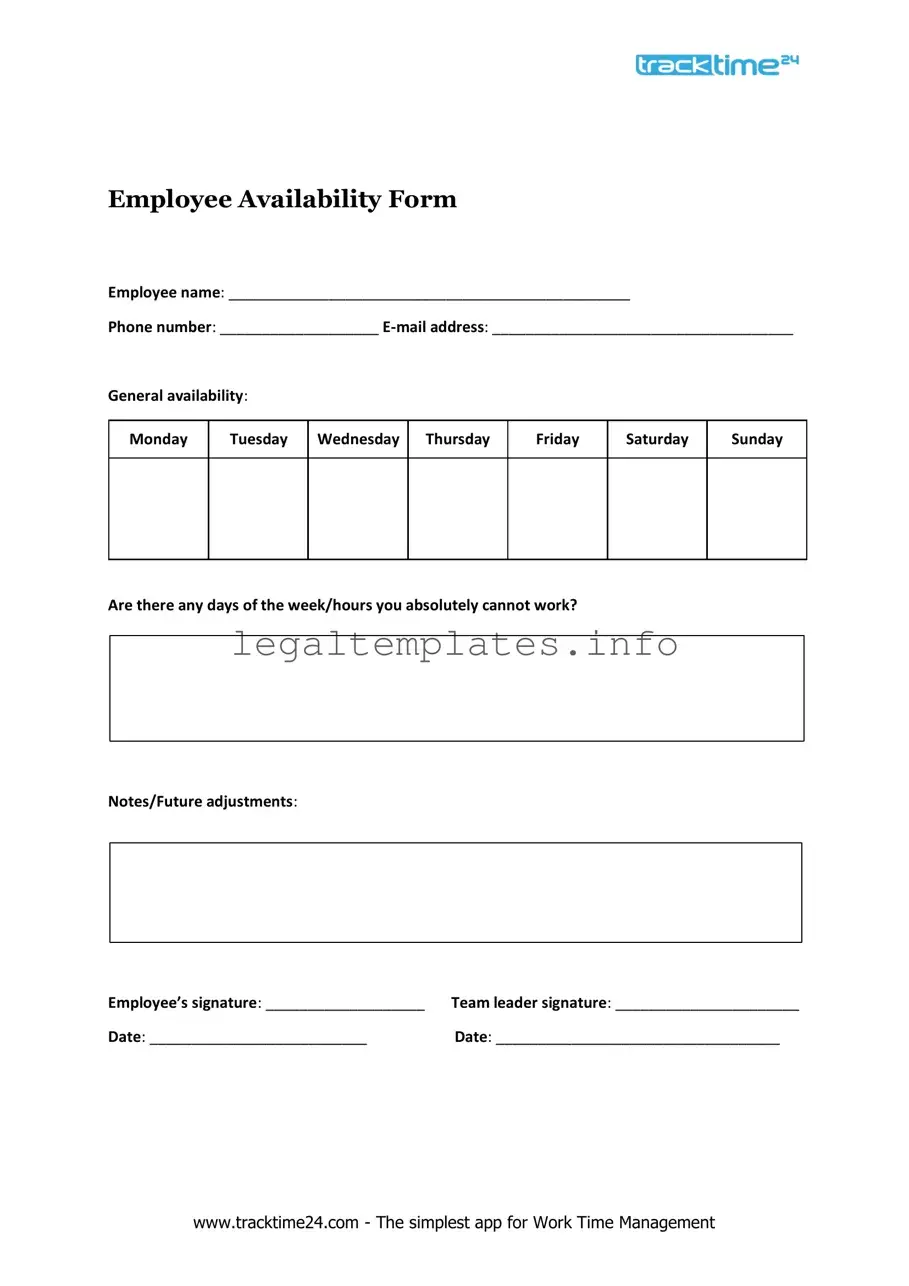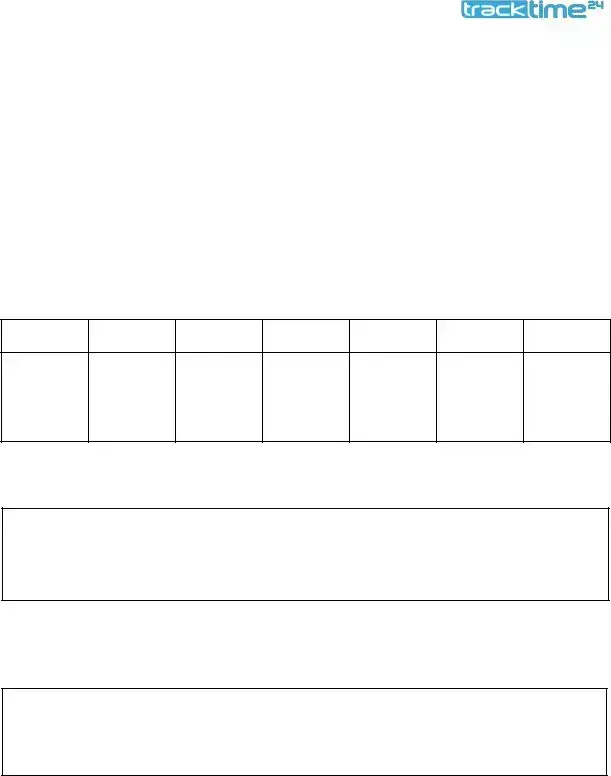What is the Employee Availability form?
The Employee Availability form is a document that employees fill out to indicate the days and times they are available to work. This form helps managers schedule shifts efficiently, ensuring that the business operates smoothly and accommodates the availability of its staff as much as possible.
Who needs to fill out the Employee Availability form?
All employees are required to fill out this form, especially those working in roles that have varying shifts, such as in retail, healthcare, and hospitality industries. It's also useful for any organization that needs to manage the scheduling of its workforce effectively.
When should I fill out the Employee Availability form?
You should fill out this form upon being hired, or at any time when your availability changes. It's important to update your availability as soon as possible to help your manager make informed scheduling decisions.
How often can I update my Employee Availability form?
While you can update your availability as needed, it's best to limit changes to when there's a significant shift in your scheduling needs. Frequent changes may affect the stability of the work schedule. Always check with your manager about how often you can submit an updated form.
What happens if my availability changes suddenly due to an emergency?
In cases of emergency, communicate directly with your manager as soon as possible. While the Employee Availability form is essential for scheduling, most employers understand that emergencies can arise and will try to accommodate unexpected changes.
Is it guaranteed that I will get the shifts that match my availability?
While managers aim to schedule shifts that align with employees’ availability, there are no guarantees. Shift allocation also depends on business needs, the availability of other employees, and your job role. However, filling out the form accurately can increase the chances of getting preferred shifts.
Can I refuse a shift that is outside my availability?
Policies on refusing shifts vary by employer. Generally, if a shift falls outside your stated availability, you may have grounds to refuse it. However, it's important to review your employment contract and discuss any concerns with your manager.
How do I submit my Employee Availability form?
Submission processes vary by company. Some may require you to submit the form electronically through an employee portal, while others may accept paper forms handed directly to your manager or HR department. Always follow your company's specific submission guidelines.
Will filling out this form affect my part-time or full-time status?
Typically, the Employee Availability form is used to manage scheduling and is not directly intended to change your employment status. However, significantly limiting your availability might affect the number of hours you are scheduled to work. Discuss any concerns about your employment status with your manager.
What should I do if my submitted availability needs to be adjusted after I've already turned in the form?
If you need to adjust your availability after submitting the form, contact your manager or HR department to inform them of the change. Depending on your company's policy, you may need to fill out a new form or update the existing form in the employee portal.

